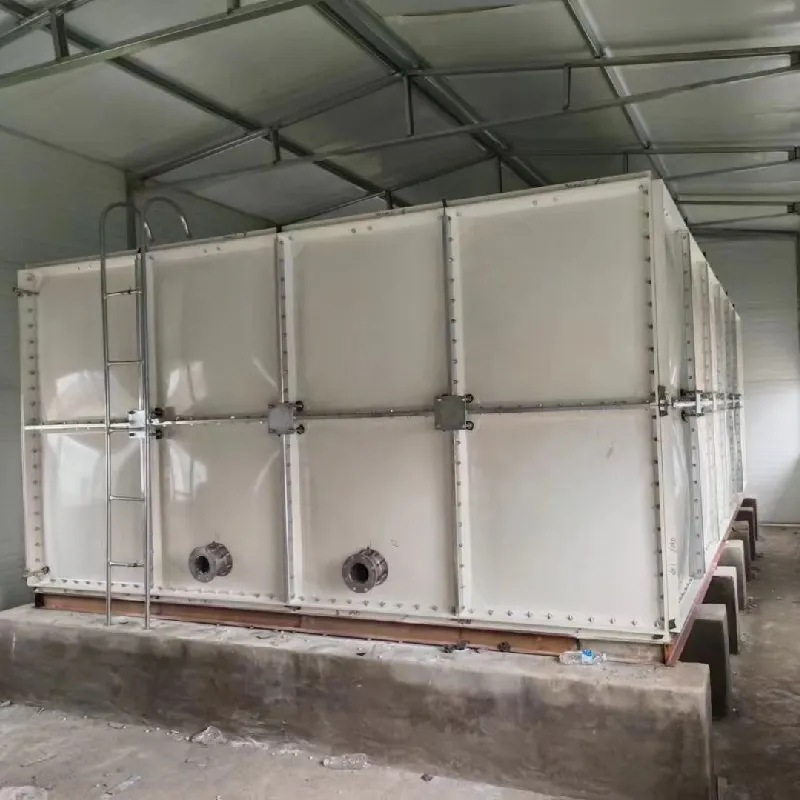loading...
- No. 9, Xingyuan South Street, Dongwaihuan Road, Zaoqiang County, Hengshui, Hebei, China
- admin@zjcomposites.com
- +86 15097380338
- Welcome to visit our website!
Innovative Fiberglass Reinforced Plastic Water Storage Solutions for Efficient Management
The Advantages of FRP Material in Water Tank Construction
In recent years, the use of composite materials in various industries has gained significant attention due to their strength, durability, and versatility. One of the most notable applications of such materials is in the construction of water tanks. Specifically, Fiber Reinforced Plastic (FRP) has emerged as a leading choice for water storage solutions. This article explores the advantages of using FRP material in water tank construction and how it addresses various challenges faced by traditional materials.
Understanding FRP Material
FRP is composed of a polymer matrix reinforced with fibers, typically glass or carbon. The reinforcement provides enhanced structural integrity, while the polymer base offers chemical resistance and durability. This combination results in a lightweight yet robust material that is ideal for water tanks, especially in applications requiring resistance to corrosive substances.
Corrosion Resistance
One of the most significant advantages of FRP water tanks is their exceptional resistance to corrosion. Traditional materials like steel are prone to rust and degradation over time, particularly when exposed to water and various chemicals. This can lead to leaks, structural failures, and the need for frequent repairs or replacements. In contrast, FRP does not corrode, ensuring that the tank remains intact and functional for many years. This characteristic is especially beneficial in industrial settings where tanks may be subjected to aggressive chemicals.
Lightweight and Ease of Installation
FRP water tanks are considerably lighter than their steel or concrete counterparts. This reduction in weight makes transportation and installation much easier and faster. For large-scale projects, the lightweight nature of FRP can lead to significant savings in labor costs and equipment usage. Furthermore, the ease of installation reduces the time required to bring a water tank into operation, which is critical in emergency or rapid deployment scenarios.
Customization and Design Flexibility
Another compelling advantage of FRP is its design flexibility. Manufacturers can easily mold FRP into various shapes and sizes, allowing for custom solutions that meet specific needs. Unlike concrete or metal tanks that may require complex fabrication processes, FRP can be designed to fit restricted or irregular spaces without compromising performance. This makes it an ideal choice for locations where space is limited or where aesthetics are a consideration.
frp material water tank

Insulation Properties
FRP materials have excellent thermal insulation properties. This characteristic helps maintain the temperature of the water stored within the tank, reducing the risk of bacterial growth or contamination. In areas with extreme temperature fluctuations, this property can be especially beneficial, ensuring that the water quality is preserved. Moreover, keeping the water at a stable temperature can reduce energy costs associated with heating or cooling treatments.
Environmental Benefits
As society becomes more aware of environmental impacts, the sustainability of materials used in construction has come under scrutiny. FRP water tanks are typically made from materials that can be sourced sustainably, contributing to a lower environmental footprint. Additionally, their longevity and reduced maintenance needs lead to less waste over time. When properly disposed of or recycled, FRP can have a minimal impact on the environment, making it a responsible choice for water storage.
Cost-Effectiveness
While the initial investment for FRP water tanks may be higher than traditional materials, the long-term savings can be substantial. Reduced maintenance costs, fewer repairs, and the longevity of the material can lead to lower overall lifecycle costs. When evaluating the total cost of ownership, many users find that FRP tanks are more economical in the long run, despite the higher upfront costs.
Conclusion
The choice of material for water tanks is crucial for ensuring functionality, durability, and safety. Fiber Reinforced Plastic (FRP) offers numerous advantages over traditional materials such as steel or concrete, including corrosion resistance, lightweight design, insulation properties, and customization options. These benefits, coupled with the potential for long-term cost savings and environmental sustainability, make FRP water tanks an excellent choice for various applications—from residential use to industrial storage needs.
As industries continue to innovate and prioritize materials that offer both performance and sustainability, FRP is poised to become a standard in water tank construction, meeting the challenges of today while anticipating the needs of the future.
-
Why Choose a Galvanized Water Tank for Your Storage NeedsNewsMay.21,2025
-
The Strength and Durability of FRP GratingNewsMay.21,2025
-
The Importance of Water Treatment Systems for Clean and Safe WaterNewsMay.21,2025
-
The Advantages of FRP Rebar for Construction ProjectsNewsMay.21,2025
-
Say Goodbye to Hard Water with a Reliable Water SoftenerNewsMay.21,2025
-
Maximize Your Water Storage with a Sectional Water TankNewsMay.21,2025
-
The Power of Filter VesselsNewsMay.19,2025
